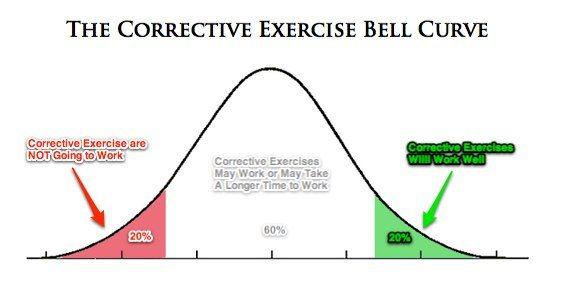Over the years I have worked with countless physical therapy students, who have all been outstanding. We have a pretty strict process to accept students at Champion PT and Performance now, as we want to assure that each student is a perfect fit.
There are two main points I try to drive home with all of our students over the course of their clinical rotation that I want to discuss. I have been getting emails and seeing a lot of PT students on social media that are doing these two things…
And they are driving me crazy!
Once these two concepts “click” for our students, you can literally see them take off with their effectiveness.
1. Don’t Get Caught Up in Specific Systems
As a physical therapy student, I get it, the road ahead is a bit daunting. You’ve learned so much in school, how do you apply it all? And I would bet most still lack confidence in their skills.
The internet has really been sensationalizing systems. However, you really need to be careful and avoiding selling your soul to one specific system.
I love systems.
In fact, we are working on making an educational program teaching you our systems at champion. But…
I’ve yet to find a system that is perfect and works 100% of the time for 100% of the people.
It’s easy to be influenced by the sensationalism, but realistically, you don’t have the clinical experience to know if a specific system is appropriate for you patient.
I see so many students going deep into a complex theoretical system, and then blindly defending it without the knowledge or experience to justify.
Take this as an example, imagine we have an athlete that strains their hamstring. I’ve heard people discuss all of this for treatment suggestions:
- Educate them that it’s a perceived threat when elongating tissue
- Work on improper breathing pattern and diaphragmatic function
- Give exercises to help with asymmetrical pelvic orientation and rib cage position
- Use corrective drills for lack of thoracic rotation
All of these things may have some merit, but you know what?
You forgot about the hamstring!
The athlete was rounding first base and considered going for a double when the outfielder made a great play, so they had to change direction quickly and accelerate back to the base. They overloaded their tissue.
Want to know my system?
- Fix what’s broke
- Fix what’s suboptimal
Too many times we jump to the suboptimal and think working on the hamstring is ridiculous, as it’s not the true “cause” of the injury. Well, it’s still injured, and that player wants to get back on the field ASAP. Your job is to help them accomplish their goal. If you spend more time on diaphragmatic breathing than facilitating healing of the injured tissue, you have this all backwards.
Realize I mentioned the athlete, as I work in the sport medicine and orthopedic world. A general population orthopedic patient with chronic hamstring pain may benefit from working on the suboptimal first.
But I am seeing people literally mocking others for working on facilitating healing of the hamstring.
Keep an open mind and don’t sell your soul to one system. You still have a lot to learn by experience what does and does not work for your patients. Every patient population is different.
2. Learn How to Connect with People
The second thing that drives me crazy with physical therapy students is when they have no ability to connect with people. Again, I get it. You just had your nose in textbooks and practical exams for several years.
We’re all dorks. Me too.
But you can’t talk over the heads of people. If your primary focus is showing how smart you are, you are going to be in trouble.
You aren’t in a practical exam anymore, you can’t talk like a robot or scientist and expect to connect with people. If you’ve ever worked with me, you know I fool around a lot. I’m rarely serious. But I know when I need to be serious and I know how to educate effectively.
You need to speak in a language that the patient can understand and relate. I talk to my baseball pitchers about “throwing pens” and “pain in layback.” I don’t ask if they have pain when they externally rotate their glenohumeral joint to end range of motion.
Remember the classic quote:
“Nobody cares how much you know until they know how much you care.”
That really applies to the field of physical therapy. If you don’t connect with your patients, you won’t be as effective.
Read these books and think the whole time, “how can I apply this to working with a patient:”
- How to Win Friends and Influence People – The classic Dale Carnegie and the first book you should read
- Winning with People – John Maxwell is great for learning how to connect with people
- To Sell is Human – Yup, getting your point across is “sales”
- Conscious Coaching – A great new book more specific to our fields
Start Your Career in the Right Direction
PT students, read all the above one more time and let it sink in.
I promise, if you work on both, you will become a much more effective physical therapist.
I have an Inner Circle webinar that dives deeper into this topic, “5 Ways to Start Your Career in the Right Direction.” These are the points I try to drive home with our students, and honestly, are things I wish I knew 20 years ago.
- Learn how to access this webinar, ALL my past webinars, and more for under $10 in my Inner Circle
- Inner Circle members click here to access the webinar





